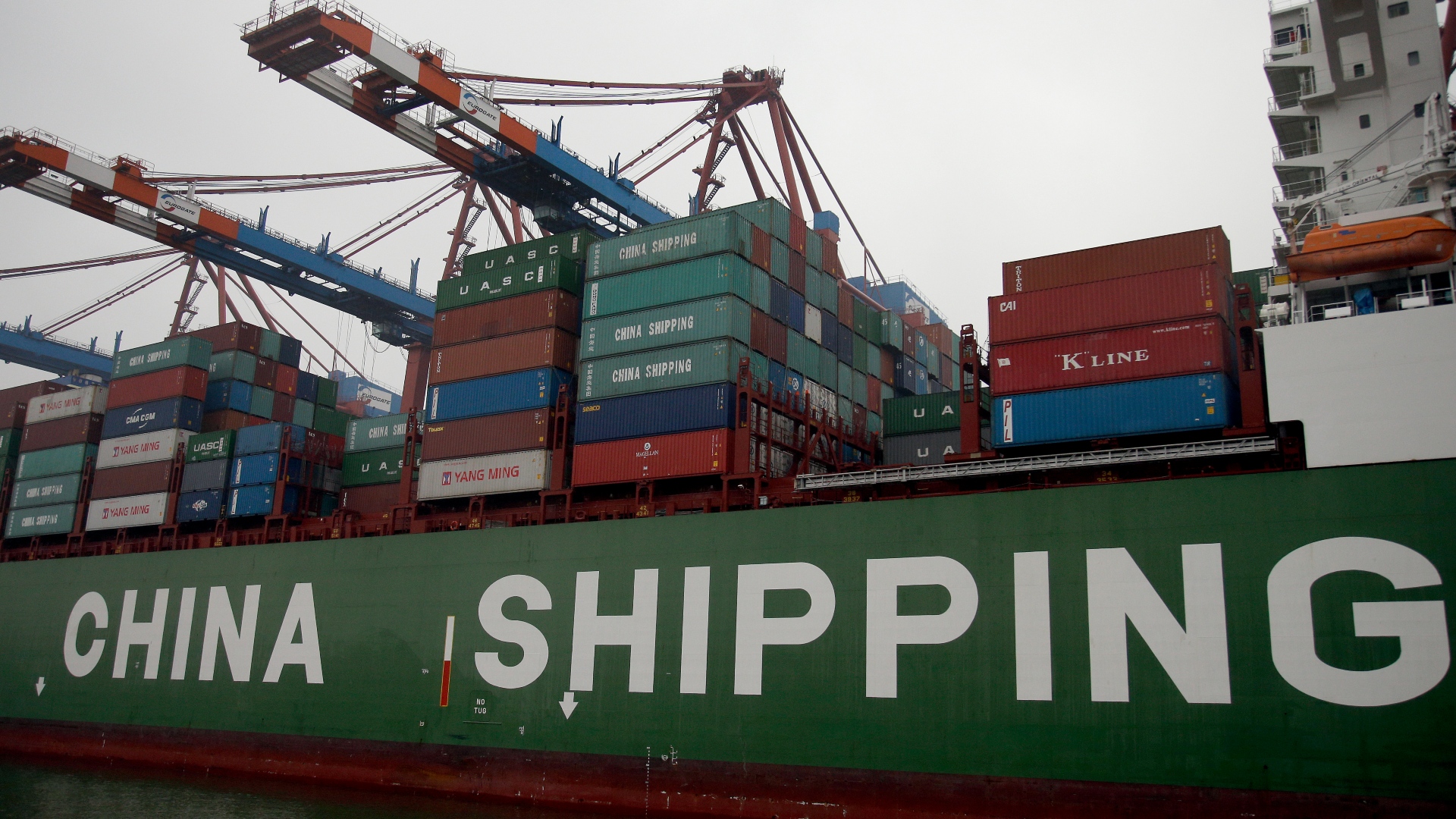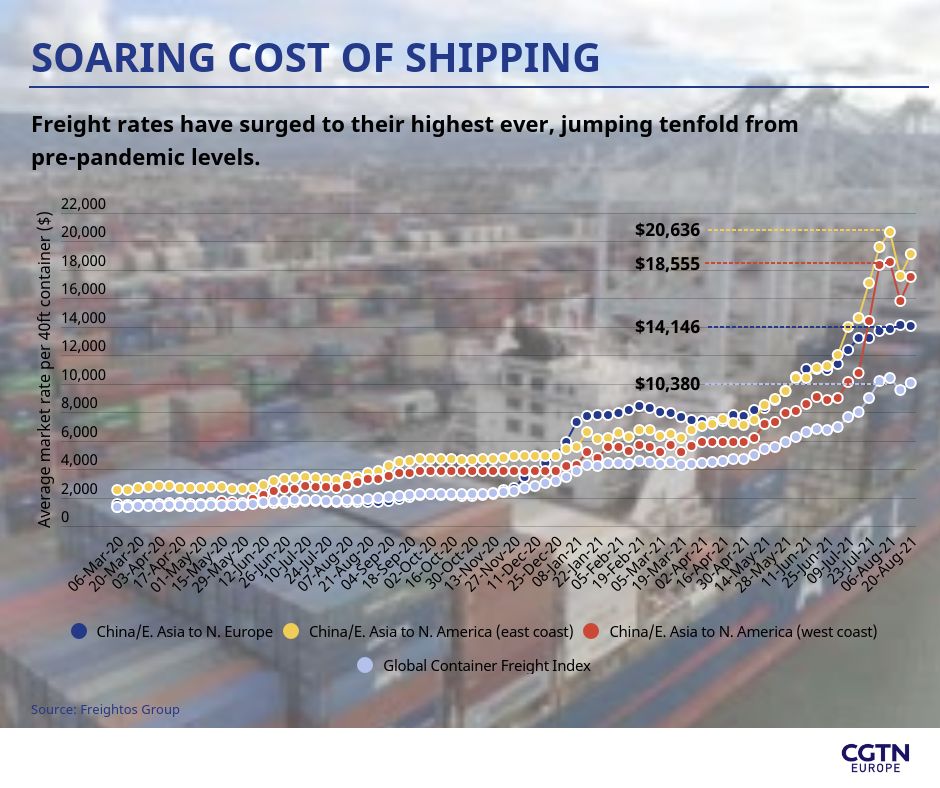
In March 2020 the costs of shipping a 40ft container from China to the west coast of the U.S. cost $133, now it is 13-times that. /Michael Sohn/AP
In March 2020 the costs of shipping a 40ft container from China to the west coast of the U.S. cost $133, now it is 13-times that. /Michael Sohn/AP
Container shipping rates from China to the U.S. continue to soar, climbing above $20,000 per container, compared with just $4,000 a year ago. The rising prices are posing a threat to a global economy already struggling with the effects of the COVID-19 pandemic.
The soaring costs, as documented by freight-tracking firm Freightos, along with chronic delays, may lead to an increase in consumer prices.
"I've never seen anything like it," Freightos CEO Zvi Schreiber told CGTN Europe. "You sometimes see that there was a shortage of capacity in August and September, but it was never as acute as this and never as long as this, with shortages in May and June, which I've never seen before."
READ MORE:
Can we eradicate poverty?
The Taliban is 'the people's choice' claims group
The spoon revolutionizing meals in space

The surging Delta variant of COVID-19 has slowed global container turnaround rates in several countries, while the semiconductor crunch, rising prices of raw materials and typhoons off China's busy southern coast in late July and this week have also contributed to the crisis.
China's shipping capacity was also disrupted after the Meishan terminal at the world's third biggest port, Ningbo-Zhoushan, was closed down for two weeks following a COVID-19 outbreak.
The world's ports and shipping lanes have also been beset by bottlenecks, with hundreds of container ships waiting off ports globally.
"These factors have turned global container shipping into a highly disrupted, undersupplied seller's market, in which shipping companies can charge four to 10 times the normal price to move cargoes," Philip Damas, managing director at maritime consultancy firm Drewry, told Reuters.
"We have not seen this in shipping for more than 30 years," he said, adding he expected the "extreme rates" to last until Chinese New Year in 2022.

People look at the cargo ship Heng Tong 77 before it is dragged by a salvage crane, after it ran aground near Sea View beach in Karachi, Pakistan. /Reuters/Akhtar Soomro
People look at the cargo ship Heng Tong 77 before it is dragged by a salvage crane, after it ran aground near Sea View beach in Karachi, Pakistan. /Reuters/Akhtar Soomro
Demand for vessels and containers looks set to only increase, as companies ramp up exports ahead of the holiday season.
Schreiber, who predicts that with increased production of container ships the crisis will ease, believes manufacturing centers and shipping routes will remain resilient.
"During the Trump trade wars people said, 'oh, now everyone's going to bring manufacturing back to the Americas.' And very little of that happened. In fact, the trade deficit with China ended up being higher at the end of Trump's term than it was at the beginning."
The rate surge is the latest reflection of disruptions since COVID-19 slammed the brakes on the global economy in early 2020 and triggered huge changes to the flow of goods and healthcare equipment around the world.
"Every time you think you've come to an equilibrium, something happens that allows shipping lines to increase the price," Jason Chiang, director at Ocean Shipping Consultants, told Reuters.
"There are new orders for shipping capacity, equal to almost 20 percent of existing capacity, but they will only come online in 2023, so we will not see any serious increase in supply for two years."
Source(s): Reuters

